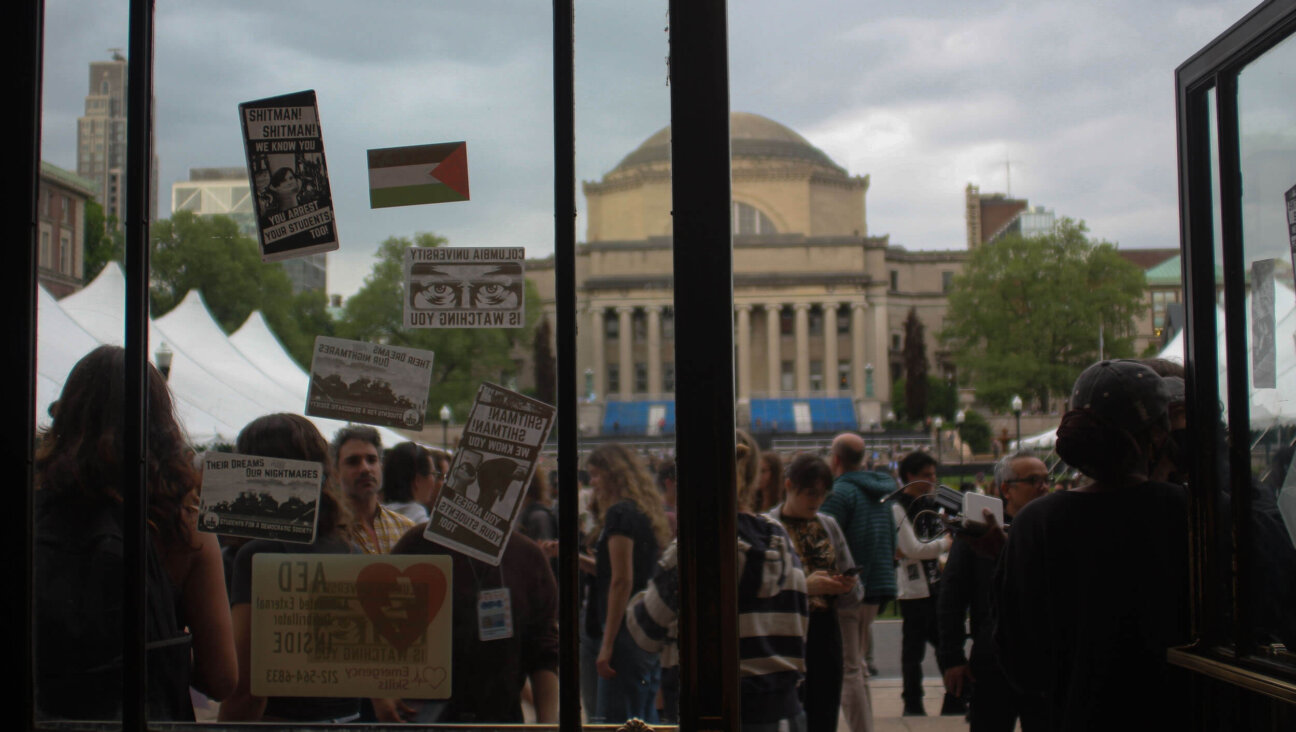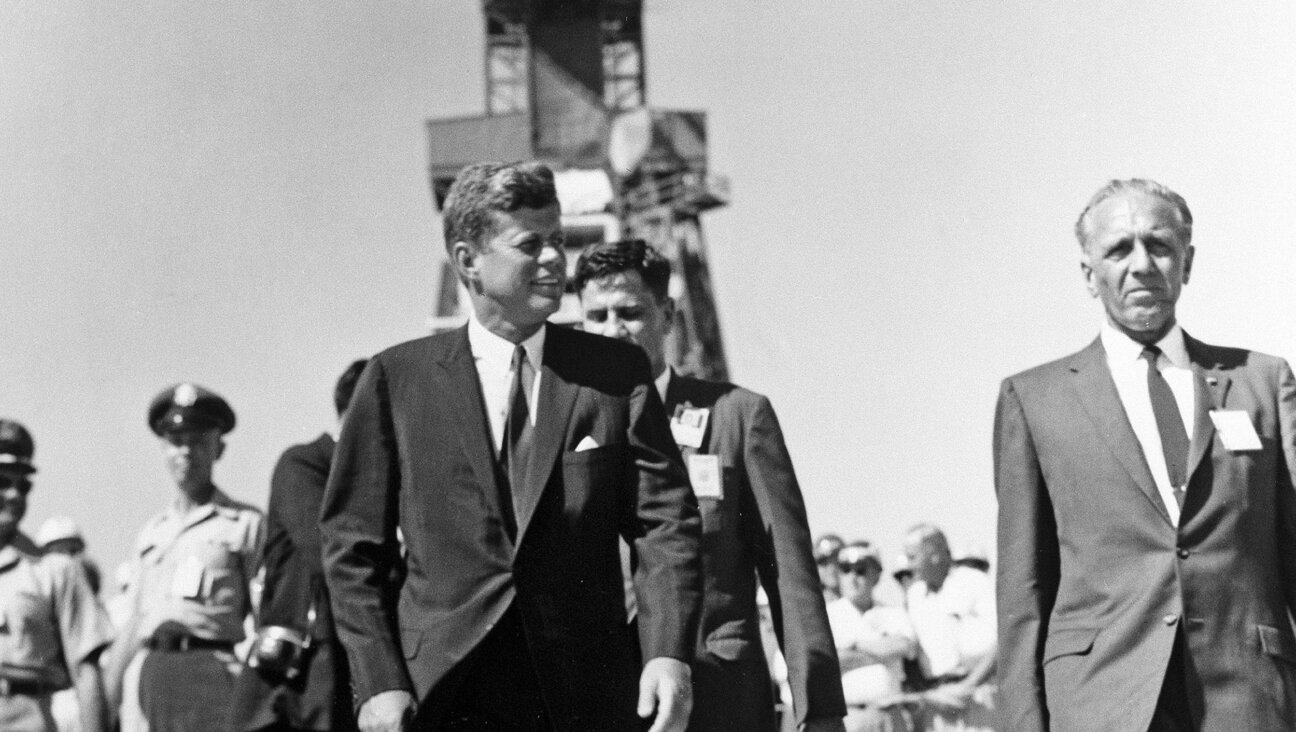Exploring the New Jewish Spiritualities
What is spirituality?
For some, the word connotes the fantasies of the New Age, from harmless notions like astrology to dangerous ones like apocalyptic messianism. For others, the word means precisely the opposite: not seeing the imaginary, but seeing the real more clearly, from the stirrings of the heart to the infinitesimal miracles of everyday existence, which, like motes on a sunbeam, ordinarily escape our notice.
Whatever it is, it seems to be on the rise. In the nearly five years since September 11, 2001—it has been that long — it’s clear that American culture has grown more prominently, publicly and particularistically religious. Senators speak openly of a religious “clash of civilizations,” and the many scholars who thought that secularization and technology would put a stop to the superstitions of religion are now rethinking their predictions of the “end of history.”
But it’s not simply religion in its ordinary sense. From our president, who has told at least one reporter that he believes himself to be on a mission from God, to Mel Gibson’s new Hollywood, American culture is re-embracing not just its Christian roots but also, in particular, a distinctly American prophetic Christianity with sources in such sects as the Puritans, the Quakers and the Methodists, all proto-evangelical movements that derived their sustenance not from dusty books of theology and Latin encyclical creeds, but from direct, mystically inflected experiences of their believers. Ours is a moment of religiosity, to be sure, but of personal, almost prophetic religiosity. Perhaps it is no surprise that apocalyptic messianism has accompanied this increase in the individualistic mystical experience; it always has been so, from the Church’s desert fathers to the kabbalists of Safed to today’s culture of the “Left Behind” best sellers and Christian Zionism.
But what of the Jews? While our dominant culture embraces religion with a fervor not seen for half a century, our demographers tell us that Jews are leaving synagogues, leaving institutional life and, indeed, leaving Judaism entirely. Are American Jews once again an anomaly — this time, ironically, precisely due to their atypical abandonment of religion?
There is no disputing the statistical evidence that intermarriage is now the dominant Jewish norm, and that organizational affiliation is dropping. Yet there also has been a counter-movement, in part due to “top-down” efforts to reengage less-affiliated Jews, and in part to “grass-roots” efforts on the part of young Jews themselves. There is a new Jewish spirituality growing in America — or rather, there are multiple ones.
Neo-Hasidim and young Chabad Lubavitchers, “Jews in the Woods” and Adventure Rabbis, this new batch of spiritual entrepreneurs is less a movement than an anti-movement: a decentralized, post-denominational and, indeed, in a sense, post-ideological generation of “New Jews” who are neither “bowling alone” (we might say, davening alone) nor joining the established leagues, but creating their own communities in major cities, in far-flung rural settings and, increasingly, online. Where costly, sincere and massive efforts to “reach the unaffiliated” have faltered, spirituality — here defined as broadly as possible — often has found success.
Whom do I have in mind? The new generation of “Chavurah Jews,” meeting in lay-led prayer groups and retreats in a collective and “DIY” (do-it-yourself) way; what might be called “OMG! Jews,” after the path-breaking Reboot study of religious affiliation in “Generation Y,” which showed how younger Jews pick and choose from multiple sources of religious and cultural identity rather than look to a single source (such as a synagogue) for communal and spiritual life; Online Jews, such as the Jewschool and Jewlicious communities, each widely diverse groups of younger Jews for whom “online” and “real world” are not two separate domains but a single continuum, and the new generation of Jewish spiritual seekers, for whom the clichés of the 1960s are literary history but who are nonetheless inspired by that period’s curiosity, openness to multiple traditions and emphasis on lived experience rather than on inherited dogma. These are some of the characteristics of the new Jewish spiritualities: decentralized, experience-centered (some would say narcissistically so), integrating wisdom from other traditions and from non-“spiritual” aspects of life, and defying of easy categorization.
I would include under the rubric of “New Jewish Spirituality” even movements and sects that many liberal Jews may find deeply troubling: the Kabbalah Centre, despite its deep faults; Chabad-Lubavitch, despite its messianism; and the “hilltop youth” in Israel, despite their violence. One may not agree with or endorse such groups, but one cannot deny that they exist, that they are focused on the spiritual and that they are, Ecclesiastes notwithstanding, something new under the sun. Even within the ultra-Orthodox world, there are important changes afoot: the passing of an older generation of leaders, the splintering of various sects and a visibility, in the United States and Israel, that that community never has known before. This is hardly the first time that new spiritual practices and communities have developed among the Jewish people — but it is probably the widest array of their manifestations.
Not surprisingly, a trend as broad and decentralized as this one has attracted a wide range of criticism. Jonathan Garb, a leading authority on contemporary Kabbalah, has written persuasively regarding the perversely disempowering effects of “self-empowerment” movements within New Age Kabbalah, which by internalizing the locus of meaning can lead to political disengagement on the one hand, or fantasy-messianic politics (which Garb calls a kind of anti-politics) on the other. In this regard, Garb is echoing a much earlier critique by the dean of academic Kabbalah, the late professor Gershom Scholem, who
deplored the “neutralization” — that is, interiorization — of the messianic impulse, which Scholem saw as containing the seeds of revolution, and as the drive to bettering the world.
These are the more sophisticated criticisms. Obviously, much of the New Age is simply bunk, hokum and superstition, and there are many observers who do not differentiate between the excesses of the flying-saucer crowd and the sincere efforts at self- and world-improvement that mark many of today’s spiritual seekers. Personally, as someone who is often a “participant observer” in the new Jewish spirituality — I teach Kabbalah, but I am also pursuing a doctorate in it; I practice meditation, but also write and edit articles about it — I am all-too-aware of the shortcomings of both sides, i.e., both those who uncritically accept its premises and those who uncritically reject them.
One of the difficulties in evaluating these emerging spiritualities, however, is that meditation, prayer and other forms of spiritual practice are not like science; their results cannot be reported in an abstract. As I have remarked in these pages before, reading a book on meditation without actually meditating is like reading a cookbook without tasting the recipes. Yes, you get a general idea — but not the main idea. Thus, while excesses of the now-old “new journalism” are easy to recognize and discard, one cannot evaluate a weeklong meditation retreat, for example, without actually trying it — and one cannot try it without involving one’s own subjectivity, for that is often the very subject of the meditation itself.
My hope then, in the months to come, is to present in this column an admittedly first-person account of emerging Jewish spiritualities, from the traditional to the radical. As someone involved in some of these movements myself, I cannot do otherwise; but, in any event, to provide any faithful report of such subjects is necessarily to involve what one contemporary teacher calls “the three faces of God”: the first person (I; subjectivity), as well as the second (we; community) and third (it; objectivity). The goal is to combine both the critical distance of scholarship, reportage and skepticism and the involvement, commitment and introspection of someone who takes seriously the possibility that spiritual development is as important a measure of the fully lived life as emotional, physical and intellectual development.
Spiritual paths are long, winding and idiosyncratic: They may be along similar trajectories, but the exact navigation is unique to each individual. Yet ultimately, most teachers say, the intended destination is not some far-off place, or an angelic realm inhabited by spirits and demons — but the journey itself: To see clearly “What Is” (as good a translation as any for the ineffable name of God); to live even the mundane moments with the wider, wonder-filled perspective of the poet or the saint — this, rather than escape, is both a quintessentially Jewish and quintessentially “spiritual” pursuit. Perhaps, if the journey is the destination, that explains why there is still so much to discover.
Jay Michaelson is a doctoral candidate in Jewish thought at the Hebrew University of Jerusalem, the creator of learn- kabbalah.com and a teacher of integral contemplative practice.
The Forward is free to read, but it isn’t free to produce

I hope you appreciated this article. Before you go, I’d like to ask you to please support the Forward.
Now more than ever, American Jews need independent news they can trust, with reporting driven by truth, not ideology. We serve you, not any ideological agenda.
At a time when other newsrooms are closing or cutting back, the Forward has removed its paywall and invested additional resources to report on the ground from Israel and around the U.S. on the impact of the war, rising antisemitism and polarized discourse.
This is a great time to support independent Jewish journalism you rely on. Make a gift today!
— Rachel Fishman Feddersen, Publisher and CEO
Support our mission to tell the Jewish story fully and fairly.
Most Popular
- 1

Fast Forward Ye debuts ‘Heil Hitler’ music video that includes a sample of a Hitler speech
- 2

Opinion It looks like Israel totally underestimated Trump
- 3
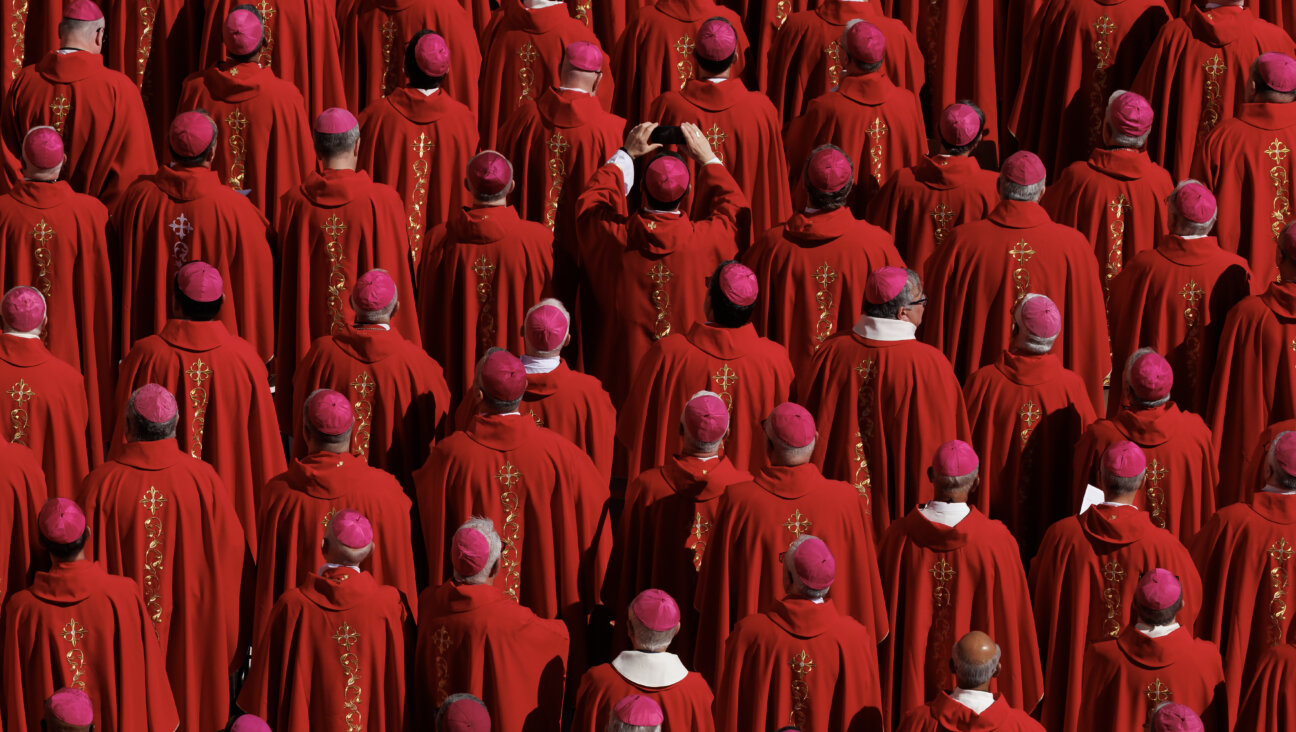
Culture Cardinals are Catholic, not Jewish — so why do they all wear yarmulkes?
- 4

Fast Forward Student suspended for ‘F— the Jews’ video defends himself on antisemitic podcast
In Case You Missed It
-
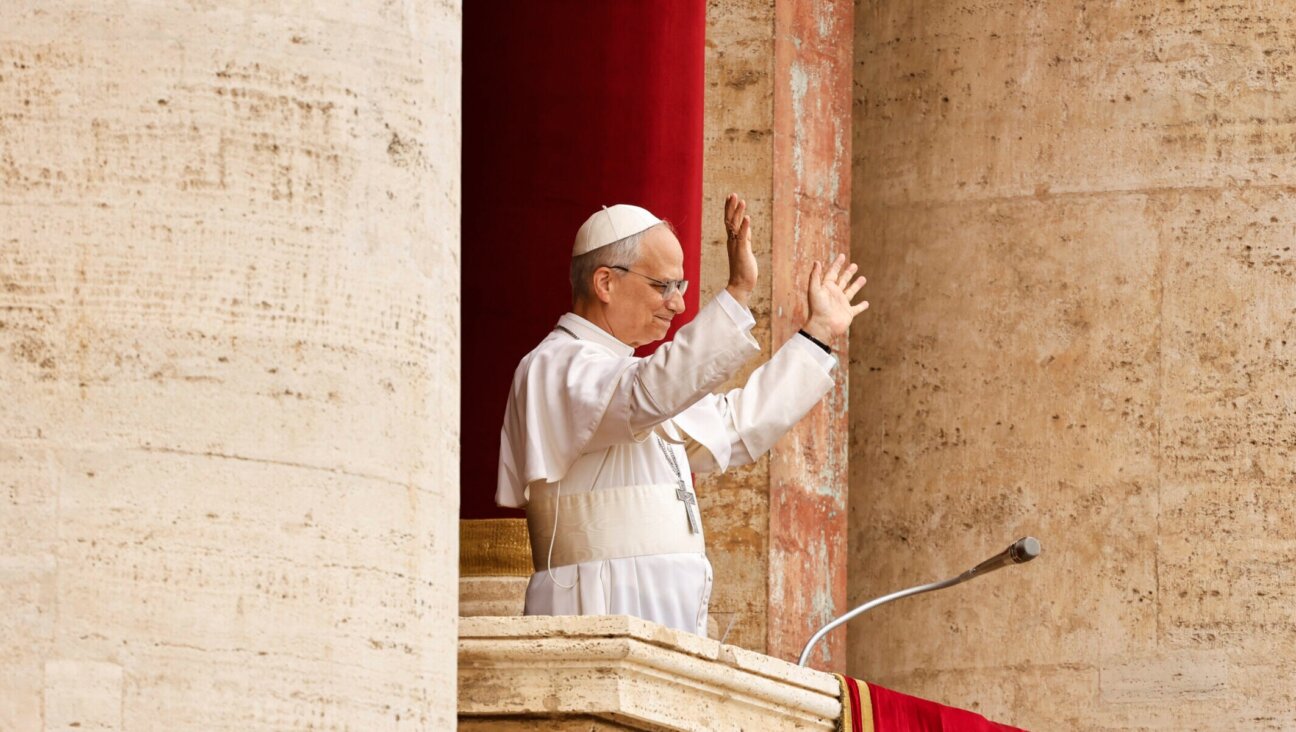
Fast Forward In first Sunday address, Pope Leo XIV calls for ceasefire in Gaza, release of hostages
-

Fast Forward Huckabee denies rift between Netanyahu and Trump as US actions in Middle East appear to leave out Israel
-
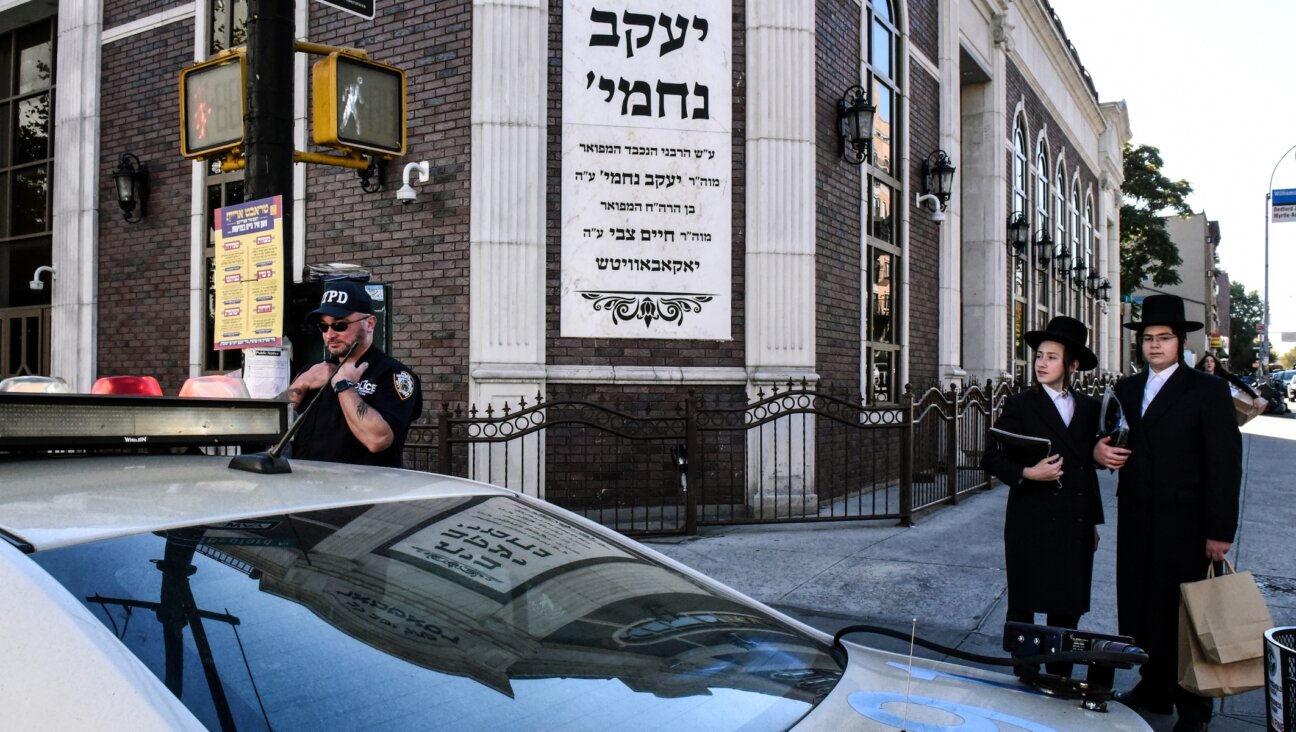
Fast Forward Federal security grants to synagogues are resuming after two-month Trump freeze
-

Fast Forward NY state budget weakens yeshiva oversight in blow to secular education advocates
-
Shop the Forward Store
100% of profits support our journalism
Republish This Story
Please read before republishing
We’re happy to make this story available to republish for free, unless it originated with JTA, Haaretz or another publication (as indicated on the article) and as long as you follow our guidelines.
You must comply with the following:
- Credit the Forward
- Retain our pixel
- Preserve our canonical link in Google search
- Add a noindex tag in Google search
See our full guidelines for more information, and this guide for detail about canonical URLs.
To republish, copy the HTML by clicking on the yellow button to the right; it includes our tracking pixel, all paragraph styles and hyperlinks, the author byline and credit to the Forward. It does not include images; to avoid copyright violations, you must add them manually, following our guidelines. Please email us at [email protected], subject line “republish,” with any questions or to let us know what stories you’re picking up.









